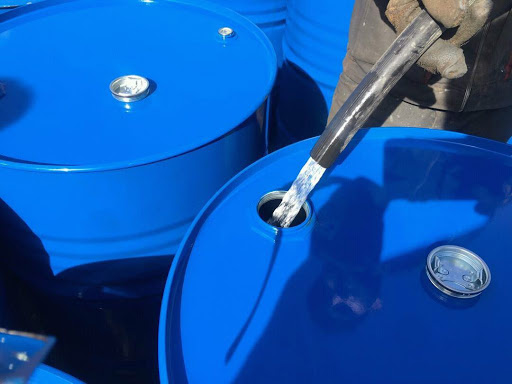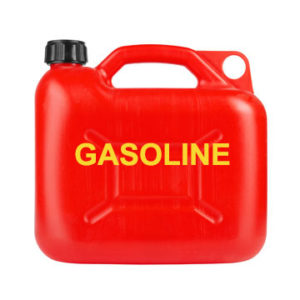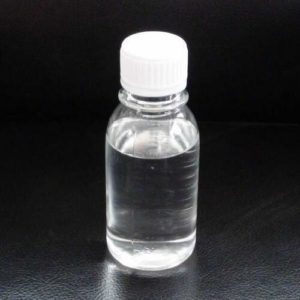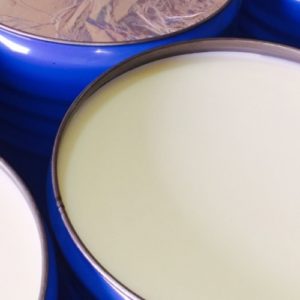Application
White Spirit is a petroleum distillate used as a paint thinner and mild solvent. In industry, mineral spirits are used for cleaning and degreasing machine tools and parts, and in conjunction with cutting oil as a thread cutting and reaming lubricant.
Mineral spirits are an inexpensive petroleum-based substitute for the vegetable-based turpentine. It is commonly used as a paint thinner for oil-based paint and cleaning brushes, and as an organic solvent in other applications. Mineral turpentine is chemically very different from turpentine, which mainly consists of pine, and it has inferior solvent properties. Artists use mineral spirits as an alternative to turpentine since it is less flammable and less toxic. Because of interactions with pigments, artists require a higher grade of mineral spirits than many industrial users, including the complete absence of residual sulfur.
In screen printing (also referred to as silk-screening), mineral spirits are often used to clean and unclog screens after printing with oil-based textile and Plastisol inks. They are also used to thin inks used in making mono-prints. Mineral spirits are often used in liquid-filled compasses and gauges.
Manufacturing of paints and varnishes
Paint and varnish materials are mainly used for the coating of metal, wood, plastic and give them stability, strength, and good grip. Basis for the production paints and varnishes is white spirit (synthetic paint thinner). Optimal price of white spirit and safety data sheet in turn, provides a strong demand for these products. To ensure that the products in demand in the market, care must be taken as a raw material (odorless white spirit MSDS). To produce paints used vegetable oils, solvents, low aromatic white spirit, synthetic thinner MSDS, resins, both natural and synthetic, diluents, plasticizers and other ingredients. Except raw materials (white spirit or synthetic thinner) in production paints and varnishes is important role played by recipe, know-how and technology.
Antibacterial fluids for treating wood
Antiseptic for wood – is dissolved in the aqueous or white spirit base, which has successfully, destroys the microorganisms that provoke rotting and other adverse wood processes and protects it in different operating conditions. By appointment antiseptics are divided into two main groups: preventive antiseptics and curative antiseptic solutions. Production data types base at low aromatic white spirit. Only high-quality preventive and curative of antiseptic is providing high wholesale.
Degreasing of metal structures
White spirit is used for degreasing / cleaning before painting steel structures, fittings, industry equipment’s and others. White spirit cleans the surface of the grease, but it leaves a film, which degrades the adhesive properties of the surface.
Using in preparation of bitumen, shale, and automotive rubber roofing mastics
A method for preparing bitumen mastic comprising mixing in mixer heated bitumen, talc, rubber adhesives based on natural rubber and white spirits solvent in a predetermined range of ratios. White spirit also well dissolves mineral oils, bitumen, resins and other resins and not much raises the price of the final product compared to other solvents.
Using for dissolution of polishing and grinding pastes
Piece of solid paste in a small amount is dissolution in white spirit and applied to the disc, that you can start polished details. The white spirit safety data sheet is selected individually, for reasons of chemical compatibility of the active solvent and polished materials. Polishing pastes can be used not only in technical, but also in the art and hobby and that because particular attention is paid to the manufacturer process quality, in this case should to use low aromatic white spirit or odorless white spirit.
Cleaning agent for parts of industrial equipment and cars
The white spirit is one of the most popular organic solvents that used for flushing / cleaning industry and cars details of various contaminants. His popularity in this area is also since white spirit is quite strong solvent, it copes with different types of dirt and deposits. White spirit safety data sheet is most safety for cleaning application than other types of solvents. In case, flushing industry and cars details the cost-effective solution to use high aromatic white spirit from 17 to 25 % aromatic – it has stronger solvent characteristic and lower price than low aromatic white spirit or odorless white spirit.
Mineral spirits are also used for re-gripping golf clubs. After the old grip is removed, the mineral spirits are poured into the new grip and shaken. After the mineral spirits are poured on, the new underlying tape and the new grip are slid on. After an hour of drying out, the new grip and the club are ready to use.
Although not normally marketed as a fuel, white spirit can be used as an alternative to kerosene in portable stoves, since it is merely a light grade of kerosene. It cannot be used as an alternative to white gas, which is a much more volatile gasoline-like fuel.
White spirits are also a major ingredient in some popular automotive fuel/oil additives, such as Marvel Mystery Oil, as they are capable of dissolving varnish and sludge build-up.
Mineral spirits are also commonly used for cutting fluid in ultraprecision lathes (commonly referred to as diamond turning machines).




